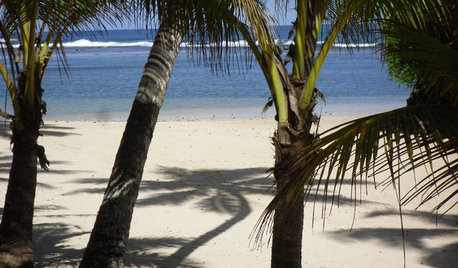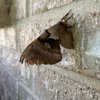How cool before they go south...
hawkeye3007
16 years ago
Related Stories

WORKING WITH PROSGo Beyond the Basics When Interviewing Architects
Before you invest all that money and time, make sure you and your architect are well matched beyond the obvious levels
Full Story
DECORATING GUIDESTravel Takeaways: Design Inspiration From the South Pacific
Samoa’s freely flowing tropical beauty offers decorating lessons on color, texture and being inspired by nature
Full Story
BATHROOM DESIGN14 Design Tips to Know Before Remodeling Your Bathroom
Learn a few tried and true design tricks to prevent headaches during your next bathroom project
Full Story
ORGANIZINGPre-Storage Checklist: 10 Questions to Ask Yourself Before You Store
Wait, stop. Do you really need to keep that item you’re about to put into storage?
Full Story
FRONT YARD IDEASBefore and After: Front Lawn to Prairie Garden
How they did it: Homeowners create a plan, stick to it and keep the neighbors (and wildlife) in mind
Full Story
GARDENING AND LANDSCAPINGWhat to Know Before You Buy Teak Outdoor Furniture
Learn about finishes, weathering, care and that age-old oil debate to get the teak furnishings that suit you best
Full Story
WINDOW TREATMENTSHow Low Should Your Drapes Go?
Hover, brush the floor or pool like Scarlett O'Hara's tears — we give you the lowdown on curtain length options
Full Story
LANDSCAPE DESIGNGo for Baroque for a Vivacious, Colorful Garden
Give your landscape a sumptuous feel with over-the-top hues, bright accessories and container arrangements as wild as can be
Full Story
MY HOUZZLounge Spaces That Keep the Party Going Outside
Sink into these 10 cushy and chill outdoor entertaining spaces by design-savvy homeowners
Full Story
HOUZZ TOURSRegional Design: Charleston and the South Carolina Lowcountry
On the fringes of the South Carolina coast, a range of classic vernacular styles meets modern technology and updated sophistication
Full Story






garden_of_oz
hummersteve
Related Professionals
70037 Landscape Architects & Landscape Designers · Franconia Landscape Architects & Landscape Designers · Owings Mills Landscape Architects & Landscape Designers · Severn Landscape Architects & Landscape Designers · Aloha Landscape Contractors · Bridgeview Landscape Contractors · Elkridge Landscape Contractors · Farmington Landscape Contractors · Fuquay-Varina Landscape Contractors · Longmont Landscape Contractors · Pleasant Hill Landscape Contractors · Westchester Landscape Contractors · Freehold Decks, Patios & Outdoor Enclosures · Lacey Decks, Patios & Outdoor Enclosures · Philadelphia Decks, Patios & Outdoor Enclosuresjennyfoo
lovefornature
hummersteve
lucygreenthumb
yardenman
ctnchpr
lucygreenthumb
User
bdriver71
hummersteve
icterid
hummersteve
scouterbecky
lucygreenthumb
hummersteve
icterid
esrungg
User
sgt_bob
ctnchpr
hawkeye3007Original Author
esrungg
chescobob
ltlhbgrl